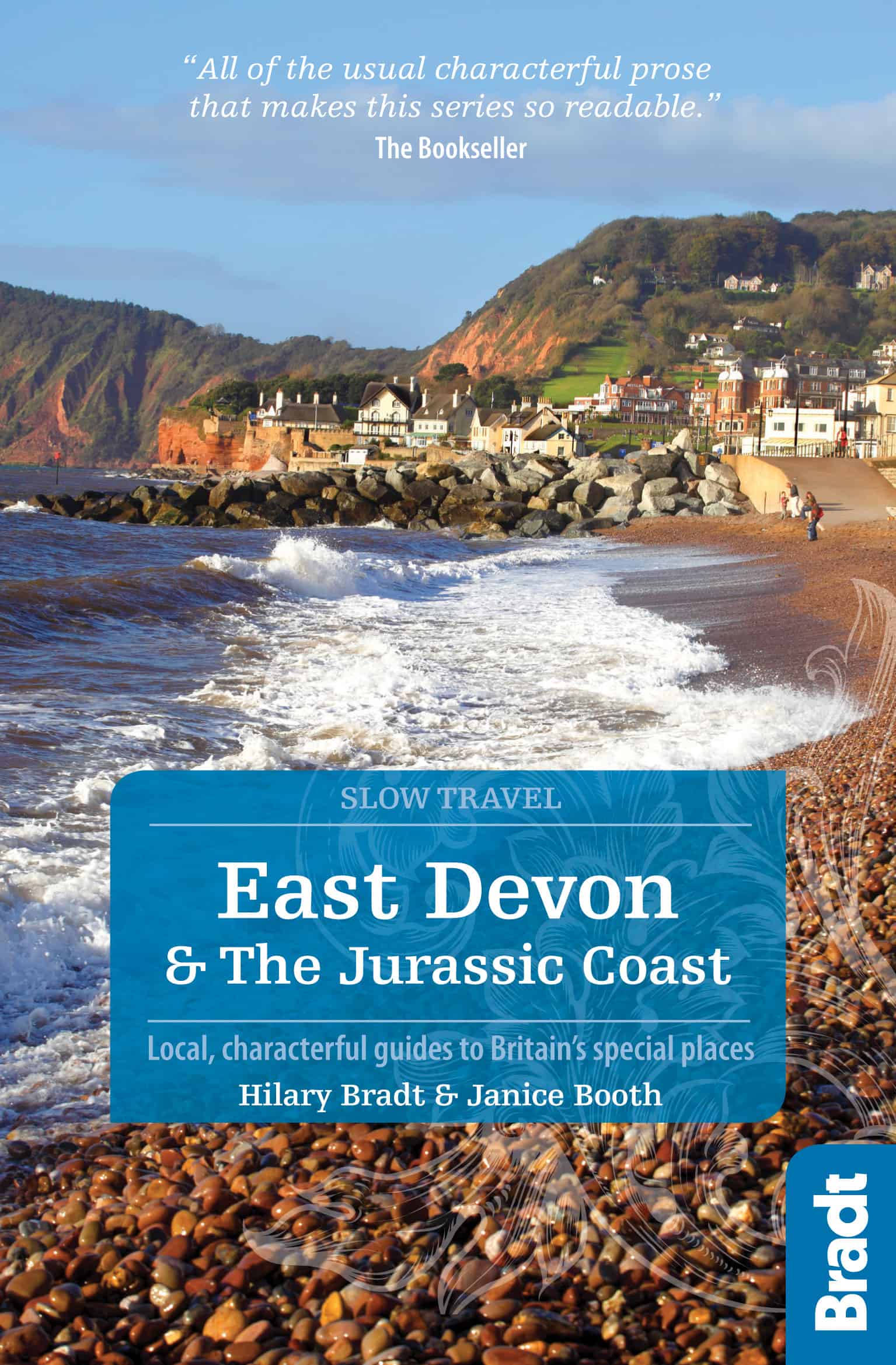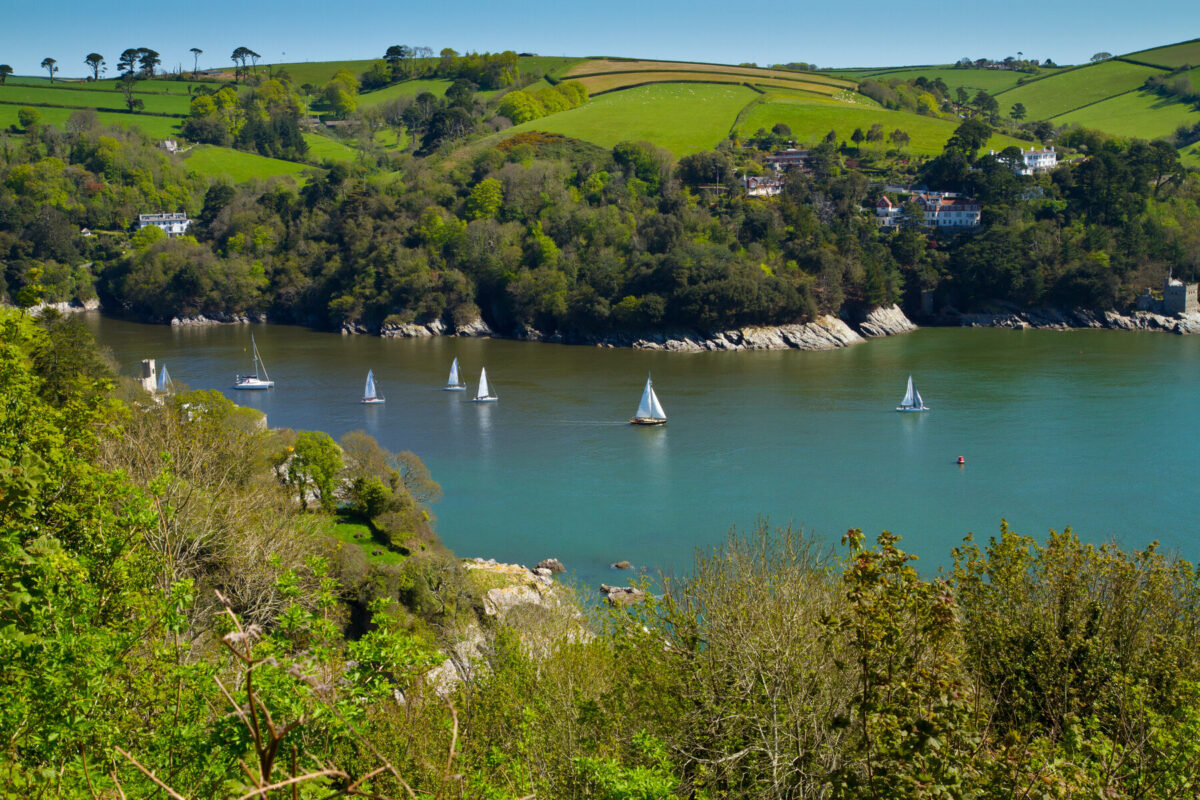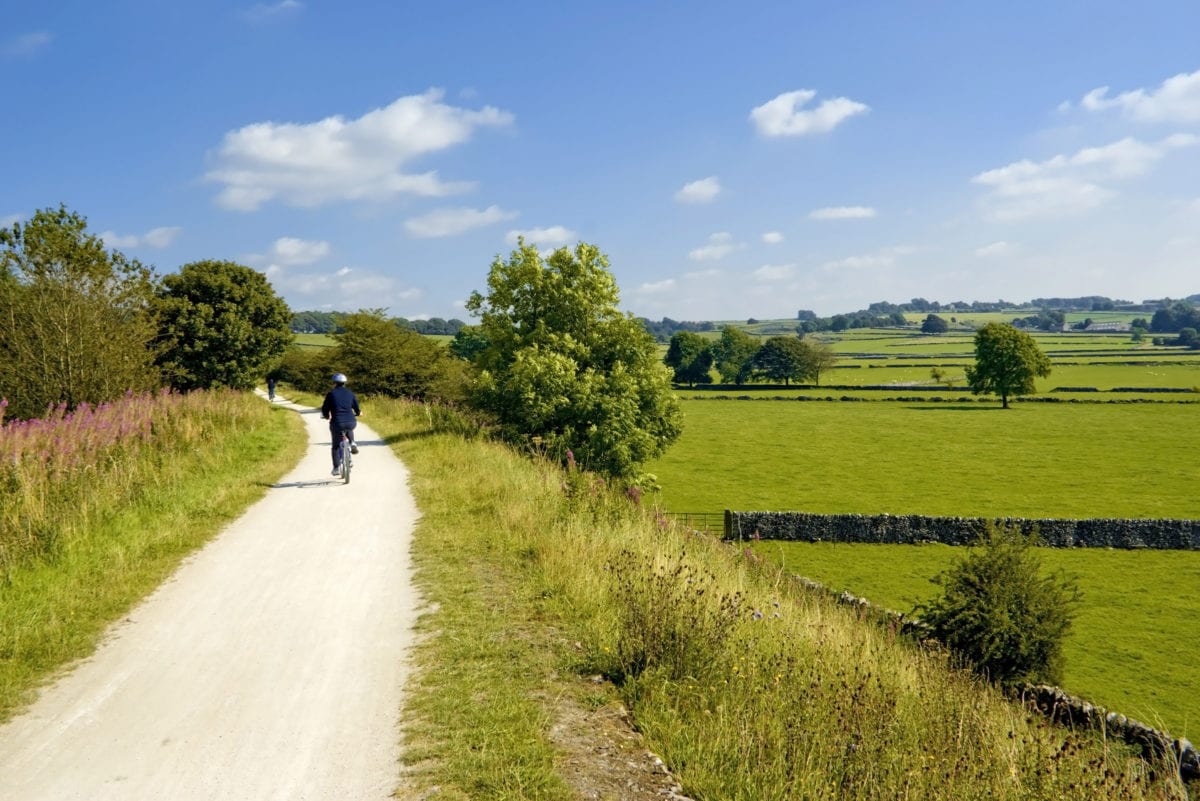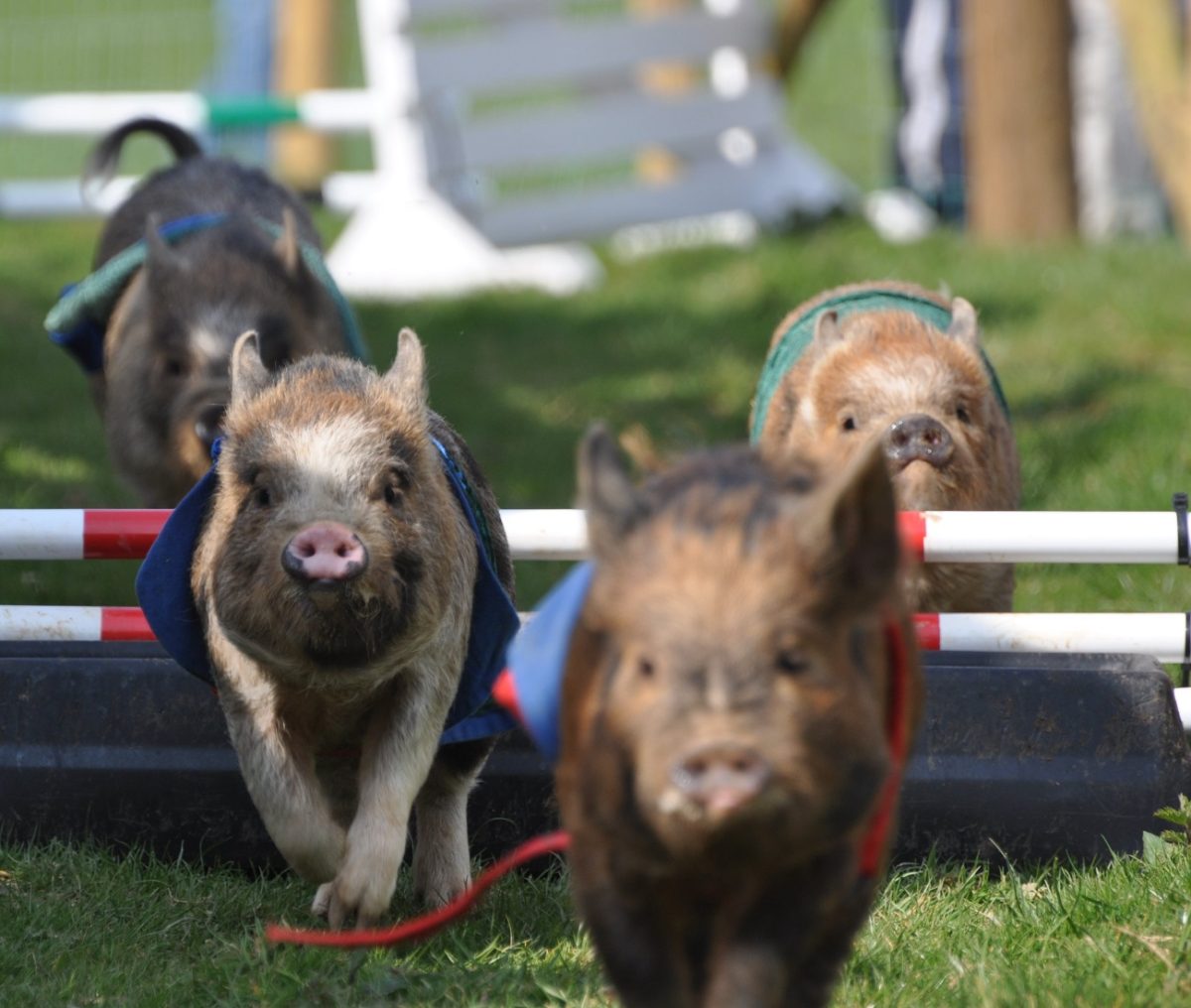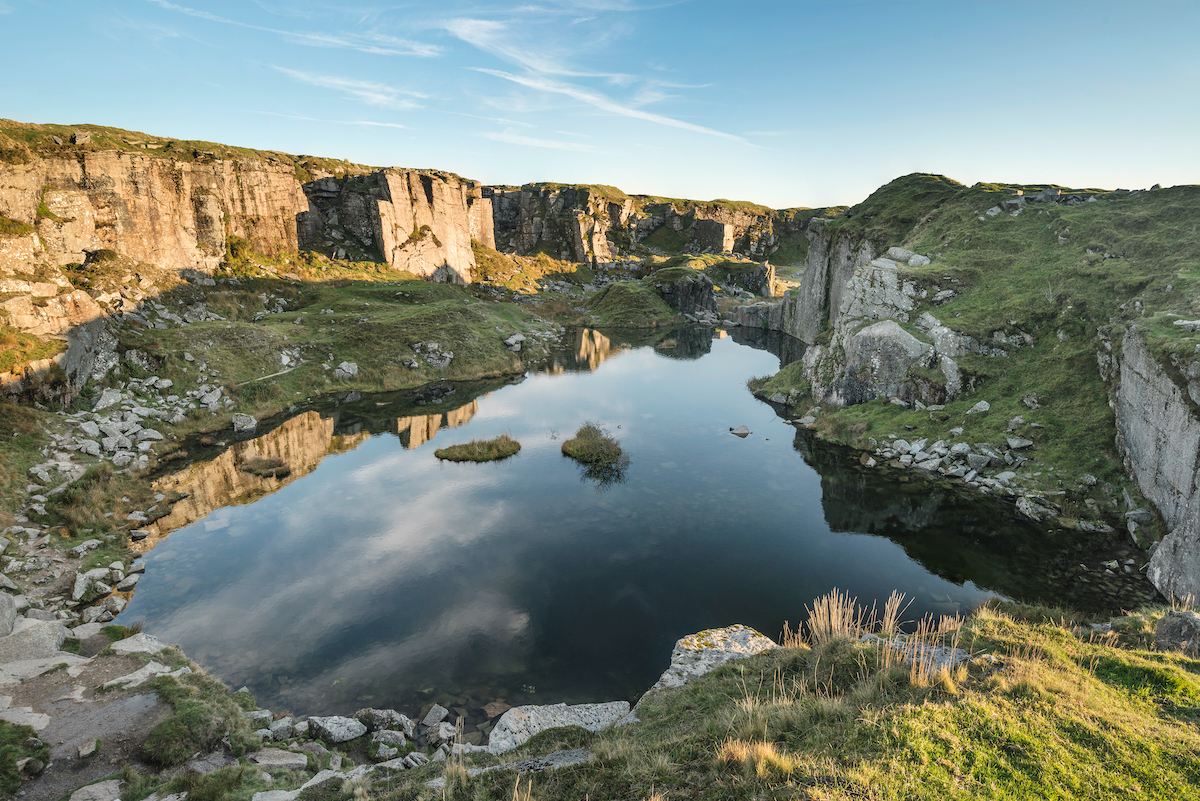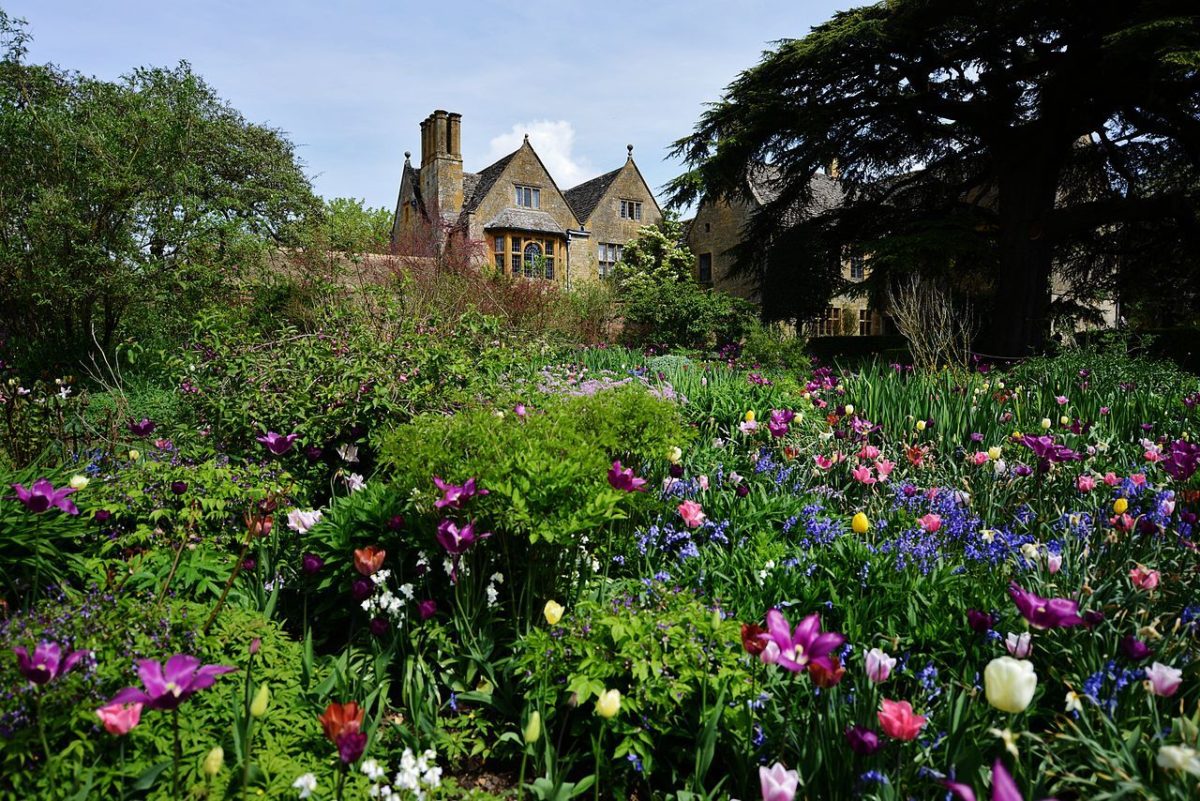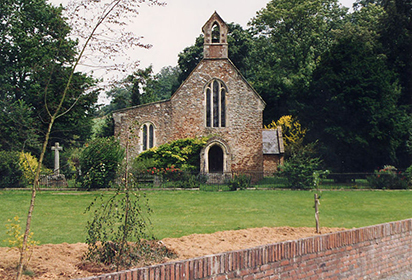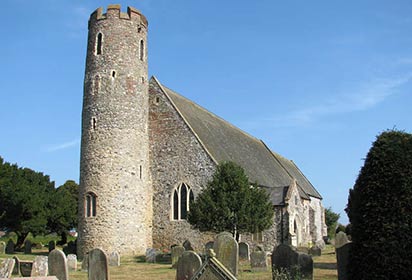Small villages busy themselves with local, volunteer-run events, and cyclists or walkers on the quiet lanes are rarely disturbed by something as vexing as a car. There’s so much for the Slow visitor to enjoy.
Hilary Bradt & Janice Booth, authors of Slow Travel East Devon and the Jurassic Coast: the Bradt Guide
Mention holidays in Devon, and someone who doesn’t know the county is likely to think of cream teas, pasties and picture-postcard villages. So far, so good, and indeed they are plentiful; but what about East Devon’s spectacular Jurassic Coast, a UNESCO World Heritage Site with a multi-million-year history? Or Exeter’s magnificent Cathedral, containing the longest unbroken stretch of Gothic vaulting in the world? Or the slow, peaceful and beautiful miles of off-road cycling and walking offered by the likes of the Exe Estuary Trail, the South Coast Cycle Path and the 80-mile Buzzard Route? Add to these the sand and shingle bays of sheltered little coastal towns, cupped protectively between their ancient cliffs; the mass of waterbirds on the Exe and Axe estuaries; and the far-reaching views from hills and heathland. Around 60% of East Devon is a designated Area of Natural Beauty, and it shows.
Whether for a short break or a longer holiday, East Devon is a place to savour slowly. Don’t rush. Enjoy its meandering lanes with flower-flecked hedgerows, its timeless little village churches, and its many good restaurants where you can linger pleasurably over fresh, locally produced food. See geology brought innovatively to life in the new Seaton Jurassic Centre; visit Sidmouth’s popular donkey sanctuary; learn about carpets in Axminster or lace-making in Honiton; and discover local history in lovingly maintained museums. Bus routes – always scenic and sometimes charmingly erratic – link the towns and villages, so for true, slow relaxation you can leave your car at home.
Bradt on Britain – our Slow Travel approach
Bradt’s coverage of Britain’s regions makes ‘Slow Travel’ its focus. To us, Slow Travel means ditching the tourist ticklists – deciding not to try to see ‘too much’ – and instead taking time to get properly under the skin of a special region. You don’t have to travel at a snail’s pace: you just have to allow yourself to savour the moment, appreciate the local differences that create a sense of place, and celebrate its food, people and traditions.
For more information, check out our guide to East Devon and the Jurassic Coast
Food and drink in East Devon and the Jurassic Coast
Savouring the tastes of East Devon
Devon has long been known as a county of good food. Much of its meat is home-reared in small-scale and ‘happy’ conditions; and the seafood is exceptional, with Exmouth mussels sold throughout the UK and the ‘brown crab’ said to be at its biggest and juiciest along Devon’s coast. For a while East Devon lagged behind South Devon but now there’s a rapidly growing enthusiasm and expertise in food; really, how could it be otherwise when Hugh Fearnley-Whittingstall and his River Cottage have made it their home?

Also top chef Michael Caines, who has had such a positive impact on Devon’s food scene, is now planning a luxury hotel and restaurant in Lympstone on the Exe estuary. Most seaside towns and villages have their own fish outlet, selling whatever the day’s catch has provided: straight from the sea and glisteningly fresh. The region is justly proud of its fine restaurants and farm shops, and hosts several food fairs including the huge one in Exeter each April.
Drinking in Devon
The county is no laggard in its production of alcoholic drinks as an accompaniment to all that good food. Leading the field is the Otter Brewery, arguably the best-known brewery in the South West. This is still a family business, set up 25 years ago by David and Mary Ann McCaig, and leads the way in sustainability as well as popularity. Five regular brews are produced year round, with a seasonal one to add warmth to the darker months. Every pub in this book will serve Otter ales; it is the local brewery. The brewery is not generally open to the public, but group tours are occasionally given by prior arrangement. They claim that a pint of Otter is drunk every nine seconds in the UK!
There are some good local wines, also some excellent Devon cider (or cyder) and ‘scrumpy’ (derived from the dialect word ‘scrump’ meaning a small withered apple), which nowadays is the term used to describe ciders made in small quantities and using traditional methods. Several farms in this area do still press the apples through straw and use oldstyle crushers and presses. Prepared traditionally, four hundredweight of apples will make 40 gallons of scrumpy, and a good scrumpy normally has an alcohol content of at least 7% despite tasting deceptively light and refreshing. So beware: it’s not just apple juice! Cider has been drunk in Britain for more than 1,000 years, and in olden times farming landowners often paid their workers in scrumpy and other foodstuffs. Today the British consume nearly half of all cider made worldwide; the West Country is our biggest producer, followed by Kent.
Where to stay in East Devon and the Jurassic Coast
For information about accommodation, see our list of the best places to stay in East Devon & the Jurassic Coast
What to see and do in East Devon and the Jurassic Coast
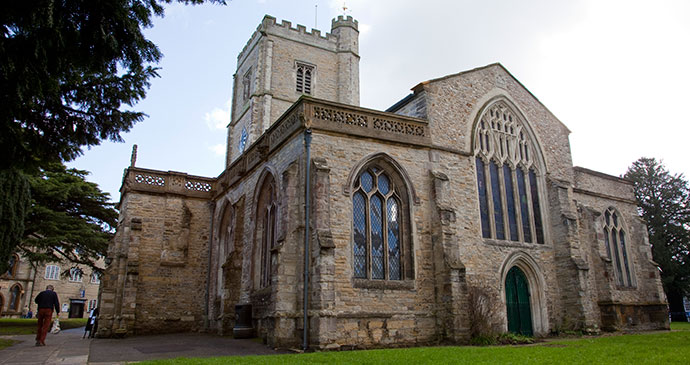
Devon’s Far East
The Beeching railway closures in the 1960s shortened the train’s coastward ‘rush’ somewhat, although the little tram between Colyton and Seaton now travels on part of its old route, but the ‘watered valley’ that borders this area is still beautiful. The Axe still cuts like a knife through the region, carving its valleys and whittling its hills, along with its sister river the Coly. Both give their names to several places in the area. In 1805, Axminster and Kilmington were both on the ‘Trafalgar Way’, the 271-mile route from Falmouth to London up which news of the victory at Trafalgar was rushed by post-chaise. The four horses were changed 21 times during the journey, which took a breathless and bone-shaking 37 hours; the ninth change was in Axminster, at a recorded cost of £1.11.
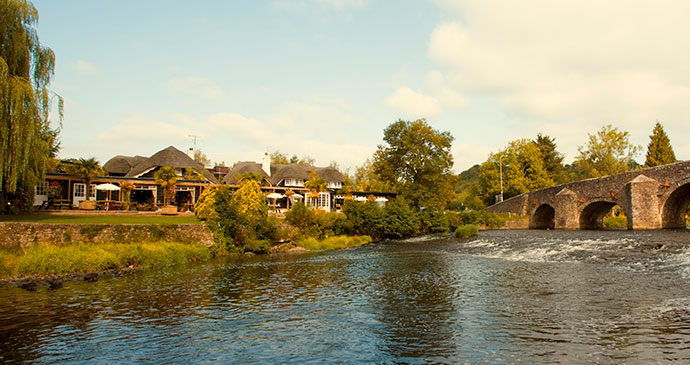
East of the Exe
We generally know it as the M5 Corridor but this region is actually part of Mid Devon, though too rewarding to leave out of a guide to East Devon. Mid Devon was shaped by the wool industry. Mills were built, the great churches were financed from wool wealth, and inconsequential villages became important market towns through this white gold. Industry needs power, and the wool industry needed water to drive the mills. Before the arrival of the motorway, the area was defined by two great rivers, the Culm and the Exe, which provided this power.
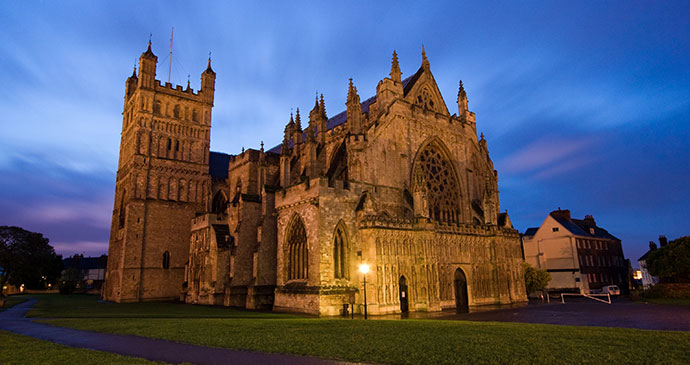
Exeter & the Exe Estuary
As cities go, Exeter is surprisingly gentle, with plenty of open spaces and visible history encouraging a moment’s pause and enjoyment. It’s also compact, cupped in green surroundings, without the unappealing urban spread that commonly occurs. There are so many unexpected discoveries: the 10th-century ‘Exeter Book’ of Anglo-Saxon poetry; the breathtaking beauty of the great cathedral’s Gothic arches; the rough texture of the old Roman wall, still as it was when strolled along by sandalled Roman feet; tiny ancient churches; twisting medieval lanes; sudden bursts of art; markets and cafés proudly selling local produce; parks and gardens bright with flowers; a poem inscribed on the pavement – the list goes on.
Of course there are downsides too – the crowds, traffic, ugly post-war rebuilding, a soulless shopping area, some dreary streets – but the balance is definitely positive. Rated in surveys as one of Britain’s happiest cities in which to live, Exeter is well worth exploring. Of course Exeter’s great plus is, as the Rev Stebbing Shaw mentions above, the River Exe; its broad estuary, stretching seaward, attracts a mass of birdlife and an equal mass of Exeter’s inhabitants, enjoying its leisure potential. Watersports in the waterside towns and villages are fast growing in popularity, and the new 26-mile cycle trail along its banks, from Exmouth on one side right round to Dawlish on the other, provides stunning views and some hearty exercise for both cyclists and walkers. And, while Exmouth marks the end of the estuary’s eastern bank, it also marks the start of the geologically fascinating Jurassic Coast, a UNESCO Natural World Heritage Site stretching 95 miles eastward into Dorset.
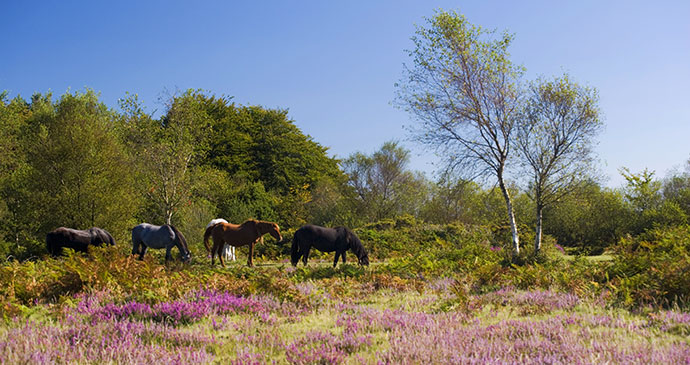
Honiton & around
Away from the seaside and accompanying holiday crowds, this is the heart of East Devon, a gentle landscape of rolling hills, spacious views, narrow lanes almost hidden by the wayside flowers, little churches and welcoming pubs. It is a region for walkers or cyclists looking for solitude, or brave drivers who are comfortable on the single-track lanes. To the north of Honiton are the Blackdown Hills, part of Devon’s Area of Outstanding Natural Beauty (AONB), and to the west, bordered by the M5, the A30, and the A373, is a more gentle region of farmland, villages and pubs: one of my favourite parts of East Devon.
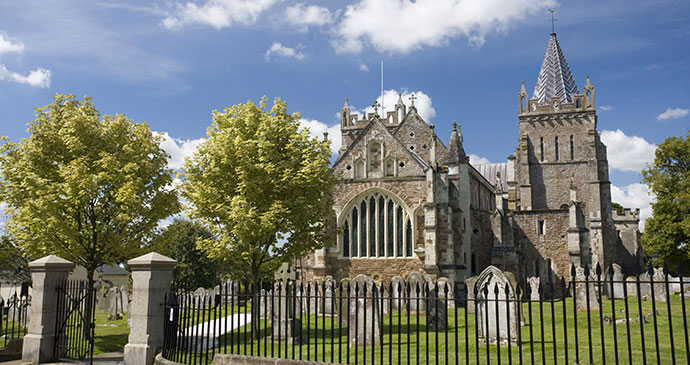
The River Otter & the Heart of Devon’s AONB
The rivers which run down to those holiday resorts have, for centuries, been an obstacle to the passage of vehicles along the ancient road from Exeter to Axmouth and beyond, now the A3052. Poppleford, or pebble ford, gives the clue that this village marked the ford across the River Otter, and Sidford crossed the smaller so less challenging Sid. Traffic now passes smoothly over the bridges and the rivers are the focus for recreational walking, with the Otter standing out as having the best riverside walks. Over 60% of East Devon has been designated an Area of Outstanding Natural Beauty (AONB). This includes not only the Jurassic Coast but the heathland and gentle hills enfolding small villages which lie inland. Meandering through this region is the East Devon Way (EDW), whilst the River Otter bisects it north to south and the A3052 runs east to west, providing access to the seaside towns and villages.
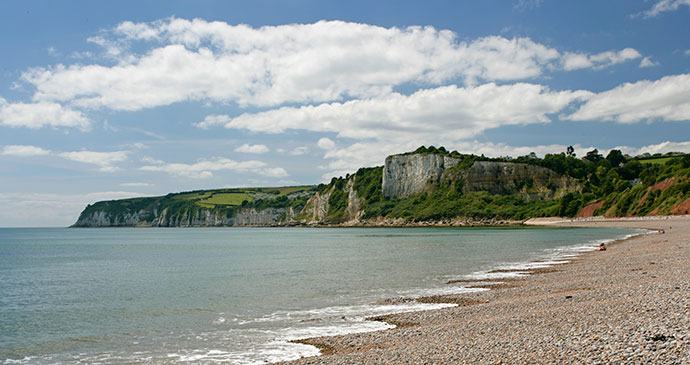
The Seaside Towns
Seaside towns as such started to develop in Heath’s ‘magnificent bays’ in the Regency period; 1750 saw the first record of claims that sea bathing was beneficial, and by the end of that century the familiar attractions of seaside towns were well established. Originally bathing took place in the winter, whether a quick spartan dip in the ocean or in heated sea water. To reap the full benefits, immersion before 10.00 was recommended, as was drinking four quarts of sea water. Then, as that new-fangled monster the railway began to reach the coast, previously sleepy towns saw an increasing influx of visitors and a consequent spread of bathing paraphernalia (tents, machines, attendants …) to preserve their modesty. It’s a very different scene today, although the seaside towns and villages in this chapter have all retained faint echoes of Victorian sedateness. Their beaches are still fringed by small colonies of much-loved, cheerily painted beach huts, where families and retired couples set out their deckchairs and brew up tea on camping stoves; visitors stroll along the promenade admiring the view, or sit, often bravely windswept, on strategically placed wooden benches. Children build castles or patterns out of stones for want of sand (although some stretches are sandy), or play in rock pools, or catch crabs; and seagulls are poised to grab at that last chip or bite of sandwich.
However, a new buzz has been creeping in and around our old traditional seasides, like a high tide creeping up a beach. Watersports have taken hold in a big way, with kayakers and stand-up paddleboarders now enlivening the bays. Today’s visitors show greater interest in the history and culture of the towns they visit, so local museums have improved and the work of local artists and craftspeople has become more visible. Music and literary festivals such as those in Budleigh Salterton and Sidmouth attract high-quality speakers and visitors from far afield. The fiendish cross-country Grizzly race in Seaton has international participants, and the Donkey Sanctuary near Sidmouth receives visitors from every part of the UK and beyond. But alongside the new animation we still have the tranquil and perfectly curved bays along this stretch of coast, the extensive views and fresh, fresh air on the cliffs, and the peaceful lanes and side-roads that link the villages together. Moreover, these same cliffs are a part of UNESCO’s Jurassic Coast with its multi-million-year history; and this exciting heritage is now celebrated in Seaton Jurassic, the brand-new centre opened in early 2016. These Jurassic links and their uniqueness are perhaps the most important reason of all for visiting this very special part of Britain.
Related books
For more information, see our guide to East Devon & the Jurassic Coast:
Related articles
Explore rock pools, enjoy a coastal walk or try your hand at wild swimming.
Leave the car behind and explore Britain’s highways, byways and coastal pathways on two wheels.
Hilary Bradt gives her tips on what to do on a rainy day in Devon.
There are so many wild and watery places to explore along Devon rivers, estuaries and coastline.
These are some of our favourite green spaces to wander in England.
Our founder Hilary Bradt and Janice Booth, authors of Slow Travel: South Devon and Dartmoor, discuss their favourite churches from the region.
Some people go to church, others go to churches.
